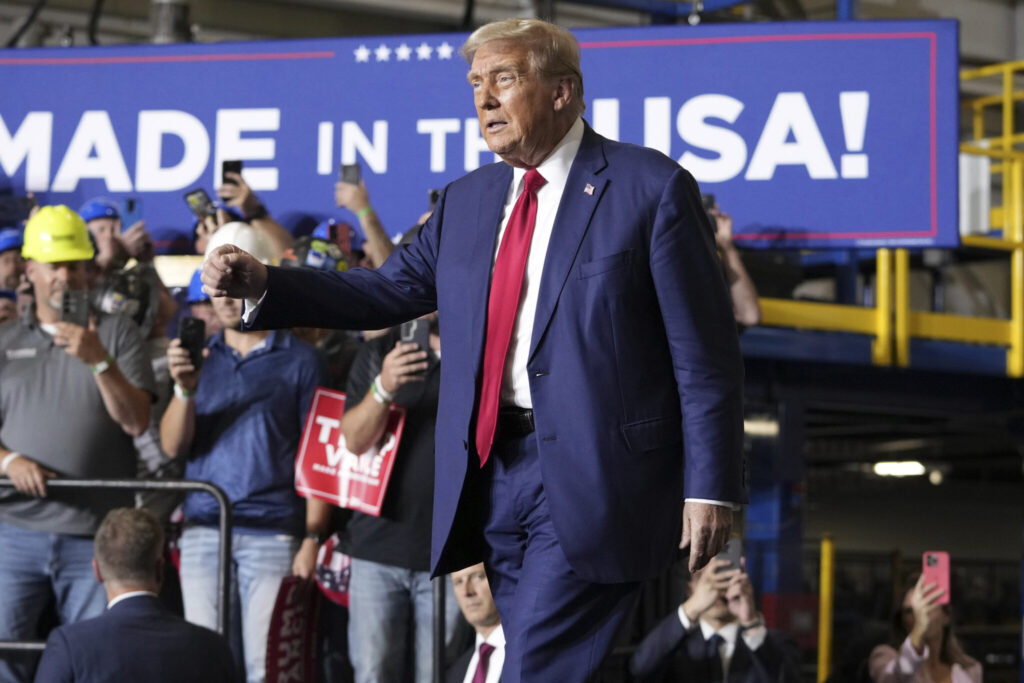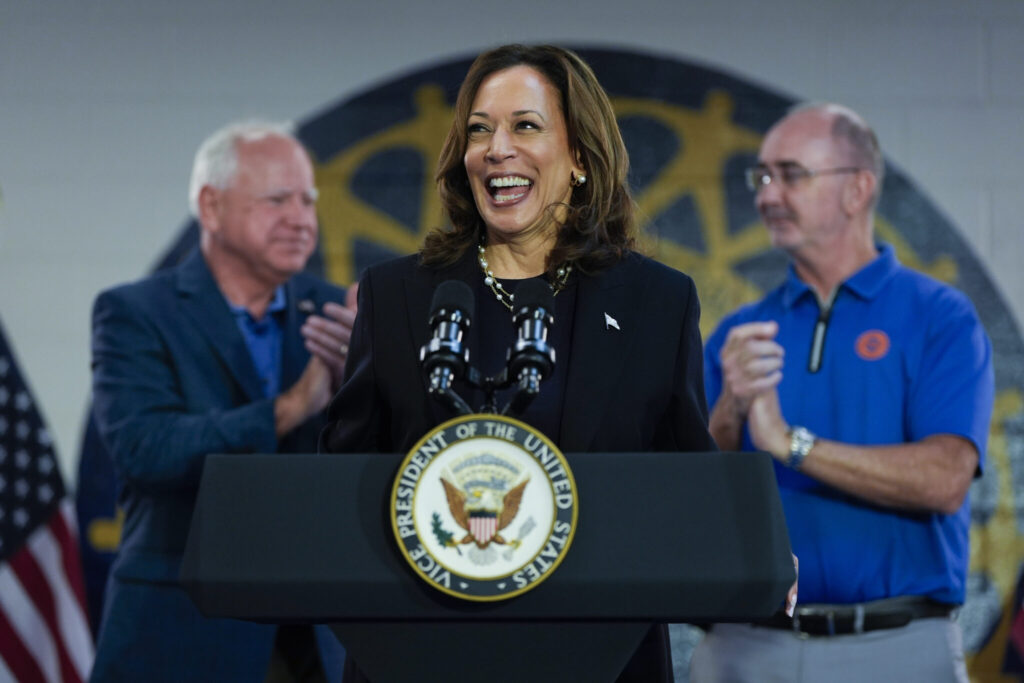Michigan union support election/ UAW Harris endorsement/ Trump unions Michigan/ union politics 2024/ labor vote Michigan/ Newslooks/ GRAND RAPIDS/ Mich./ J. Mansour/ Morning Edition/Union support is at a crossroads in Michigan for the 2024 presidential election, with Vice President Kamala Harris and former President Donald Trump each vying for workers’ loyalty. Harris, supported by United Auto Workers (UAW) President Shawn Fain, emphasizes union benefits, while Trump targets worker discontent with messages on trade and industry.

Unions’ Moment of Truth in Michigan Quick Look
- Michigan’s Importance: A critical state for union influence, particularly in the auto industry.
- Union Division: Mixed endorsements highlight shifting loyalties among union members.
- Candidate Contrast: Harris focuses on union gains; Trump promotes alternative economic promises.
- Key Supporters: UAW President Shawn Fain backs Harris, contrasting with some rank-and-file members’ leanings.
Michigan Unions Caught Between Harris and Trump’s Promises
Deep Look
In the battleground state of Michigan, unions face a pivotal decision in the 2024 election. Vice President Kamala Harris, endorsed by United Auto Workers (UAW) President Shawn Fain, seeks to strengthen her appeal with union voters, while former President Donald Trump focuses on Michigan’s working-class base, promoting an alternative path centered around manufacturing and trade reforms.
Michigan, one of the “blue wall” states essential to both campaigns, has strong union roots in sectors like auto manufacturing. Both candidates are actively engaging with workers, although through different messages. Harris focuses on union advocacy, benefits, and worker protections, emphasizing the economic advancements made under Democratic leadership. Speaking in Grand Rapids, Fain highlighted Michigan as a “sacred ground” for labor, calling the state key to preserving the “American dream” for future generations.
Shifting Loyalties and Union Endorsements
Harris’s campaign faces new challenges in winning support from unions that previously endorsed President Joe Biden in 2020. Notably, the International Brotherhood of Teamsters and the International Association of Firefighters have not yet endorsed her, signaling a potential shift. Michigan’s Teamsters branch and California’s firefighters’ union have pledged support for Harris, yet some Teamsters nationally remain undecided. This split reflects broader changes in the union landscape, where loyalty to the Democratic Party has gradually loosened, driven by a range of economic and social issues.
Trump, meanwhile, has capitalized on union non-endorsements, claiming it proves rank-and-file support for his platform. He argues that Democrats’ push for electric vehicles (EVs) and other environmental initiatives threaten traditional manufacturing jobs. Trump also criticized Fain, dismissing him as a “stupid idiot” for supporting policies he claims will harm Michigan’s auto industry.
Key Demographics and Economic Impact
Union households remain influential beyond their direct membership. Political strategist Adrian Hemond observes that unions help deliver key messages to broader working-class audiences, amplifying candidates’ appeal. Trump’s support among non-college-educated white voters has grown as these communities have faced economic shifts such as factory closures and job losses, trends often attributed to deindustrialization and changes in trade policy.
In contrast, Harris targets union households with messages focused on the long-term benefits unions have delivered, including the five-day work week, paid leave, and sick days. She emphasizes that higher union wages benefit all workers by setting higher industry standards. Fain backs Harris’s message, pointing to the Democrats’ success in reversing right-to-work laws and supporting new contracts for UAW members across Ford, GM, and Stellantis in recent years.
The Stakes in Michigan
In 2020, Biden narrowly won Michigan by drawing strong support from unionized voters. But the landscape has changed, with Trump intensifying his outreach to disaffected union workers and conservative voters. Trump’s messaging has resonated in parts of Michigan, especially in rural areas, where he appeals to workers skeptical of the EV transition and concerned about cultural shifts.
As the election nears, both campaigns will depend on mobilizing their base. Trump aims to attract more non-college-educated white voters and make inroads with nonwhite working-class voters. Harris’s focus remains on reaching both union members and their communities, emphasizing the role unions have played in securing broader economic benefits.
Harris’s Union Strategy
Harris’s union outreach focuses on highlighting recent labor victories, including Biden’s historic visit to the UAW picket line in 2023. Fain, a key ally in Michigan, reminds voters that Democrats’ recent policy wins align with union goals, such as increased labor protections and the rollback of right-to-work legislation.
However, the stakes extend beyond individual endorsements. Fain’s backing of Harris represents a test of union influence in a challenging electoral landscape. Winning Michigan could signal the continued strength of labor’s political voice, while a shift to Trump among union voters could indicate a lasting change in the political dynamics of the industrial Midwest.







